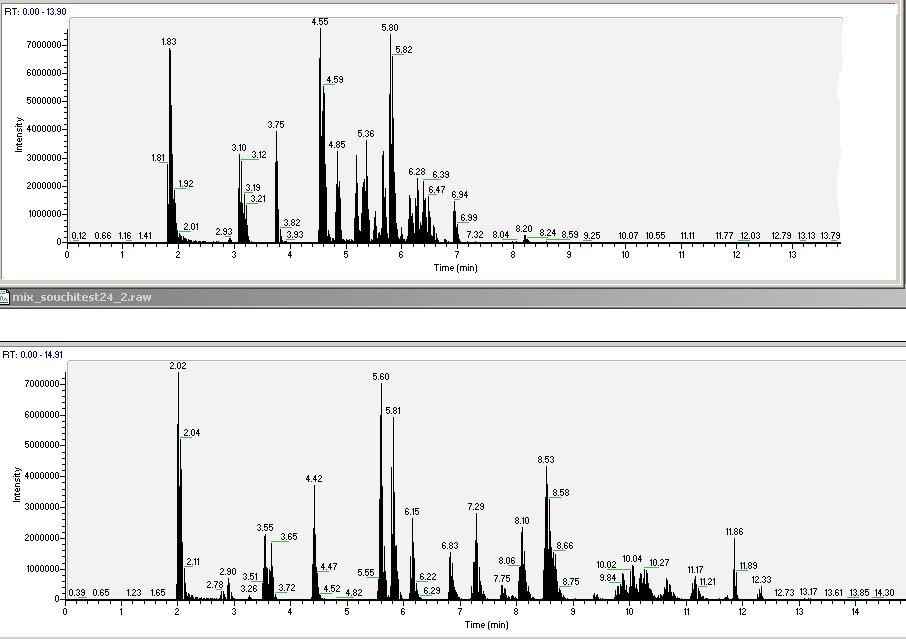|
Introduction
The toxicology section of the forensic science laboratory of Lyon is specialized in the detection and the quantification of drugs in biological matrices. Nowadays, analyses for drug-facilitated crimes cases require methods which allow the detection of drug traces. This requirement comes generally from the delay induced by the filing of complaints. In fact, this time allows the elimination of the main part of ingested substances by the organism.
Liquid chromatography-tandem mass spectrometry (HPLC-MS/MS) set on SRM mode has the adequate sensitivity for the detection of traces.
The purpose of the study was to develop an HPLC-MS/MS method to detect 35 psychotropic substances. The substances were chosen for their possible impact on human behavior (such as sedation or memory loss for example). They belong to the neuroleptics, analgesics, antihistamines, anesthetics, anti-psychotic drugs families... The maximum time for an analysis must not exceed 15 minutes. Different mobile phases and gradients were tested to obtain the most efficient separation and the best sensitivity possible.
Experimental conditions
The liquid chromatography was performed with an Ultimate 3000 UHPLC (Dionex). The LC column was a RestekŪ RaptorŪ column, functionalized with biphenyl groups. The detection of the eluted substances was accomplished by a triple quadrupole mass spectrometer, TSQ Quantum Access Max (ThermoFisher Scientific), which was set on SRM mode. Parent-to-daughter ion transitions were selected during a direct infusion of the molecules. The mobile phases tested were acetonitrile, methanol, and a binary composition of both of them, water with 0.1% acetic acid or 0.1% formic acid and ammonium formiate (2mM, pH 3). Gradients with different levels and slopes were studied
Results
The two mobile phases selected are a binary phase composed of acetonitrile and methanol (75:25) (v/v) and water with 0.1% of acetic acid. These systems were chosen among all the conditions studied for their improvement of the LC-MS/MS method in terms of resolution and sensitivity.
Optimisations of the gradient conditions for the separation of the 35 molecules are presented on the chromatograms of Figure 1. The final gradient shown below has an initial level at 20% of organic phase, three consecutive slopes (20%/min for 3.5 min, 1%/min for 6 min and 50%/min for 1 min) and a final level at 90% of organic phase. The resulting separation presents less co-elution than the separation obtained with the non-optimized gradient (above). It is judged suitable enough. The specificity resulting from the mass spectrometer permits to accept the remaining co-elution.
Conclusion
A liquid chromatography tandem mass spectrometry method has been created in order to detect 35 molecules, which can be used for a drug-facilitated crime. Now, this method needs to be evaluated on its performance in biological samples.
|
|

Figure 1: SRM Chromatograms obtained for the 35 molecules mix with ACN/MeOH 75/25 (v/v) and ammonium formiate 2mM pH 3 in water before (top) and after (below) the gradient optimisation.
|



